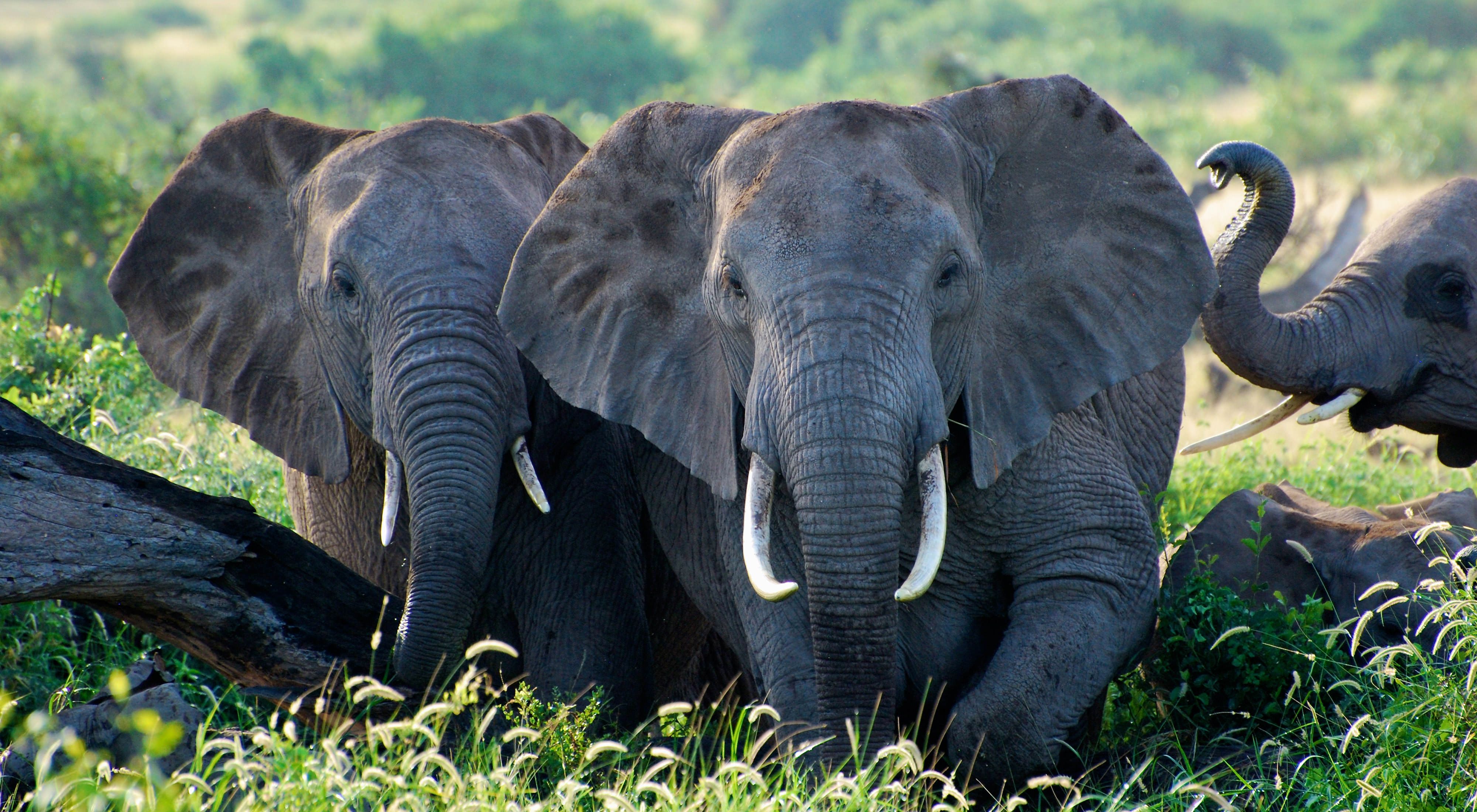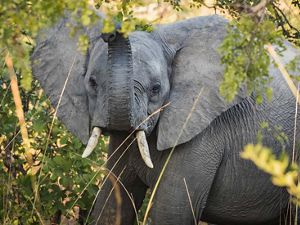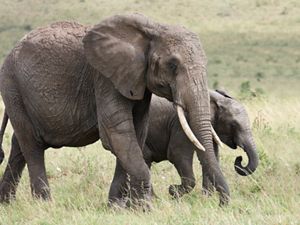Keeping Wide Open Spaces for Elephants
We’re working with partners to protect a critical elephant corridor between two national parks in Africa.
TNC Africa Director Matt Brown talks through the biggest challenges related to elephant habitat protection in this region and why he’s still hopeful.
Enduimet Wildlife Management Area (WMA) is an important elephant corridor that sits between Amboseli National Park in southern Kenya and Kilimanjaro National Park in northern Tanzania. It’s also an area that’s experiencing increased pressure from unplanned expansion of agriculture and human-wildlife conflict. That’s why we’ve identified this indigenous landscape as a priority for conservation and a place where we can make a lasting difference for the future of Africa’s elephants.
TNC Africa Conservation Director Matt Brown talks through the biggest challenges related to elephant habitat protection in this region and why he’s still hopeful.
nature.org: How is TNC helping save elephants in Kenya and Tanzania? Where are we focusing our efforts and why?
The need for anti-poaching efforts is still very real. We’re all seeing that where there is better frontline protection there is less poaching, but we aren’t out of the woods yet. In addition to supporting critical frontline protection work, another big piece of our African Elephant Initiative is keeping large spaces open for elephants to live and thrive.
Amboseli will forever be known as a real stronghold for elephants. Decades-long research on the elephant population here tells us that elephants move south from Amboseli into the forests of Mount Kilimanjaro. If we can keep Enduimet open and viable, we are both protecting critical hectares of land for elephants and helping improve livelihoods for local communities. A key vision for this area is to be able to showcase in future years that Maasai living along the northern border of Tanzania are seeing a better life with elephants alive. Today, I am not sure that is the case.
nature.org: What does TNC bring to the table?
TNC’s role is to identify high priority areas to focus our conservation efforts and to convene the right partners to have lasting impact. We’ve learned where elephants move thanks to data collected by GPS collars and this helps us pinpoint critical movement and dispersal corridors to protect. We can’t protect these big wild places alone and that’s where our partners come in. We’ve joined forces with NGOs Honeyguide and Big Life Foundation to work with the local communities on better managing this area and developing more wildlife-based tourism revenue. We’re working on a collaborative conservation action plan to get us all focused on strategies that will have the greatest positive impact.
We’ll be improving how their security patrols collect, share, and use data, which will enable them to adapt and deploy where trouble flares up. To ensure that tourism revenue is well managed, and to further increase confidence among potential funders, we’re helping WMA leaders improve their accounting and reporting systems.
In the long run, we hope that Enduimet will have a sustainable future. If successful, we’ll keep this wildlife corridor open.
nature.org: What will happen if the wildlife corridor is severed? Why can't elephants be happy in just one of the national parks?
One of the side effects of human encroachment and unplanned agriculture expansion is that there’s a lot of human-wildlife conflict. Elephants raid cornfields and local community members can lose 30-50% of their crops in one night’s feast. The humans retaliate by joining together and killing an elephant, even if it’s not the same problem elephant that did the damage. They’re killing out of revenge. This drives more human-wildlife conflict and has a negative impact on the elephant population we’re trying to protect.
As elephant, lion, and other wildlife populations increase, you see more and more conflict. Crops destroyed, cattle killed. Followed by retaliation by humans. By better designating habitat and encouraging people to understand the ways they can benefit from wildlife, we can help stop negative impacts between the two.
There are also some tactics we can use to help people live with wildlife. For example, tracking lions makes it possible to alert community members to move their cattle into new areas to avoid predation when lions are nearby. Developing crop protection teams and ensuring that the viable elephant corridors remain open grasslands rather than being cultivated are proven strategies as well.
nature.org: It's not about preventing expansion, but steering development in the right direction. Are we trying to reclaim any land that's been lost?
There’s still enough habitat in this area that we don’t need to reclaim any land that’s been lost. We’re stemming the tide.
nature.org: Why do elephants continue to be an important part of TNC's conservation story?
Elephants are a key focal species that help us identify where to focus our conservation efforts throughout Africa because they need such large habitats to exist and thrive. They shift north, south, east, and west through forests and grasslands all year. If a system works for elephants, it generally works for impala, zebra, giraffe, kudu, lion, and other species that utilize similar habitat.
nature.org: Is it really possible to save room for elephants as Africa grows?
Absolutely. The protected areas today are the heart and lungs of Africa. What we’re trying to do is create a whole circulatory system where elephants and other wildlife—which do disperse outside of protected areas—can remain viable. Even if we have to triage and let go of some places where there are elephants today, we know we have those key critical areas to fall back on. Enduimet is a great example of one of these critical areas because you have two national parks and a community area in between. As a result, you have a greater chance of success than you would with areas that are not adjacent to two national parks.
I believe that we can see development. I believe that we can see growth in Kenya and Tanzania. It’s about finding smart growth opportunities. There’s value in nature-based tourism and that’s more evident now than ever before. We need to continue to prioritize the key areas and improve management in these critical places by bringing more benefit to local communities. This is our key strategy for lands protection in Africa. We have been working on this approach with partners for the past 10 years.
In those key areas, elephants can persist. We just need good master planning, government support, and communities to realize increased benefits of wildlife. If we can do this in the most critical areas, then we can protect elephants as development occurs. We also need donors and businesses that are excited about this heavy lifting. And there’s an opportunity for governments to truly realize the value of transparently sharing how resources flow from tourism sectors into communities and the conservation efforts there. Wildlife is a natural resource and it should be viewed that way.
We can’t take our foot off the gas pedal now.



